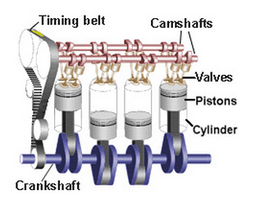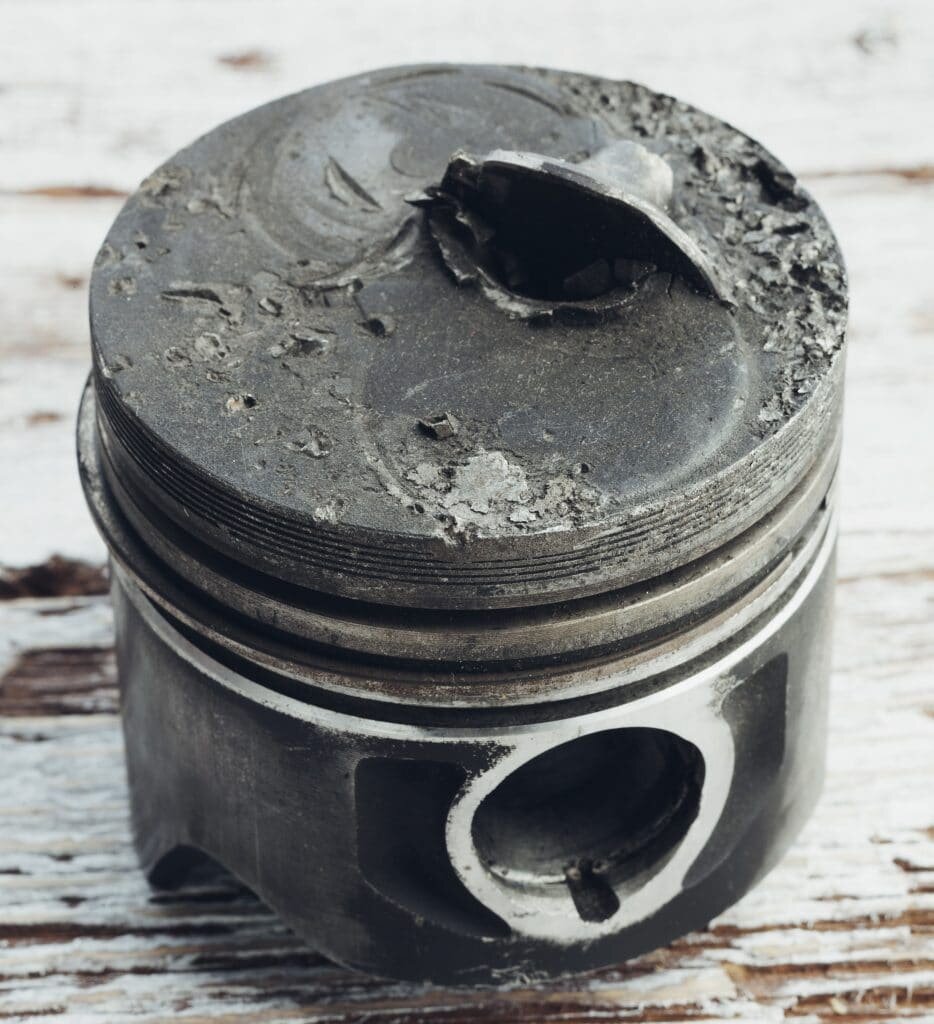Timing belt replacements - How important are they?
So, you’ve taken your car in for a service with your mechanic. They’ve checked over the car and overall it’s in great condition. However they’ve contacted you to inform you that your timing belt is due for replacement. No worries, you think to yourself. “How much will that cost me?” you ask them. “How much!?” You ask again once they’ve given you a quote.
What do they do? Does it really need to be done? What happens if it breaks? Does it need doing right now? Why are they so expensive? Can I do it myself instead? - All valid questions, that I’m sure most car owners have had to ask themselves at one point or another.
What do they do?
A timing belt is to an engine, what a chain is to a bicycle. It is the integral link between moving components. Think of the pedals of a bicycle being the pistons in an engine. Your feet are a mixture of fuel and air pushing down on them. The pedals turn the main sprocket / crank, which turns a chain or belt to drive other vital components (the rear wheel of your bike, or the camshaft/s etc of your engine). The camshaft/s tell the valves when to open to allow fuel and air into the engine.
The timing belt has many “teeth” on one side of it, which grip into grooved gears on the crankshaft and camshaft sprockets, much like a bike chain would. These allow it to be turned by the crankshaft, while turning the camshaft/s without any slipping. Not only do they provide grip, but they ensure everything is exactly in time with each other. Opening valves, only when the piston is in the correct part of its stroke.
Does it really need to be done?
Timing belts do their job really well. Until they don’t. Belts keep manufacturing costs down, absorb engine noises and vibrations and are usually not required to be lubricated to function correctly.
Unfortunately, the same reasons for the above can become their downfall.
Timing belts are made from a mixture of fibres and rubber, both of which deteriorate when exposed to heat, oil, fuel, dirt/dust or stress. This happens to be the exact environment that an internal combustion engine can create. This means they need to be replaced before they wear to a point that they are at risk of breaking.
What happens if it breaks?
Now this is something I hope none of you will have to experience on your vehicles. It can be extremely expensive, and/or very inconvenient at best.
Once a timing belt breaks, or slips - the camshafts and valves will no longer be in time with the crankshaft and pistons. This means one or more pistons will come to the top of the combustion chamber, while usually multiple valves are open. Depending on the design of the engine, it may be whats called an “interference” or “non-interference” motor. This means the valves will either have enough clearance that even if the belt breaks, valve damage is unlikely, or it means it is almost ensured. Even if the valves aren’t damaged, the engine will no longer run if the belt breaks completely.
If the piston does hit one or more valves, it can cause a wide array of potential problems. Best case scenario, it bends a valve, the cylinder head is removed & checked and the valve/s replaced before re-installation. Worst case scenario, the valve is pushed that hard up into the cylinder head that it damages the camshaft and other components in the valvetrain, breaks a valve retainer, cracks a valve guide in the cylinder head, drops the remaining valve stem into the combustion chamber as the piston travels down, gets pushed back up inside the engine at high rpm and lodges into the crown of the piston, breaks into many pieces and scores the side of the cylinder bore. Then you’re talking complete engine rebuild or replacement.
Does it need to be done right now?
Can it wait?… This is something that you need to decide for yourself. How overdue is it? Is it worth the risk? A new timing belt is good insurance on a big investment. However, in the grand scheme of things, if you need to wait a week or two to gather the money to get it done and you can’t afford it at the same time of your service - You would have to be pretty unlucky for something to happen in this time unless it is very badly worn. (Don’t send me an angry email if it does though!)
Why are they so expensive?
Generally speaking, the timing belt itself isn’t the expensive component. Within a quality timing belt kit it will contain not just a belt, but any idler pulleys that the belt runs on, as well as camshaft oil seals, crankshaft oil seals and a hyrdraulic or spring tensioner. In my opinion the replacement of the tensioner is just about as important as the belt itself. A failed tensioner will cause many of the same results as a broken belt in a lot of cases. The tensioner is often the most expensive part of a timing belt kit, but many mechanics will refuse to fit a kit without the inclusion of one.
Another cost factor within a timing belt replacement can often be the water pump for the cooling system. In many cars the water pump is driven by the fan belt and is an external bolt-on component that can be easily replaced at any time. In many other vehicles however, the water pump is mounted behind the timing cover and itself is a driven pulley within the timing system. Once again, the replacement of the water pump at the same time is often an optional extra for peace-of-mind. If the water pump starts leaking in 10,000km, the timing belt etc may need to be completely removed again and now the labour cost is being doubled. Depending on the potential labour cost of doing the job again if it does leak, and the additional cost of the part and labour to replace it while it is disassembled, you will need to decide and discuss with your mechanic which is the smart choice for your specific vehicle.
Can I do it myself instead?
We are in the age of information becoming very easily accessible online. YouTube videos, how-to’s, forums, Facebook groups and pages. It’s all out there, just about anything you want to know.
Just about every mechanic I know (myself included) began their trade at a young age by tinkering around in the shed, giving things a go. So I’m not against anyone doing the same. I still do the same when it comes to other things in life - home improvements being one example of this. You’ll never learn if you don’t give things a shot, right?
There comes a time where you need to draw yourself a line in the sand. When the risks outweigh reward. When something should be done by a professional who’s been trained in that specific task through a trade, certificate or qualification. Home electrical for example. Risks include death, fire, injury, property damage or rejected insurance claims in future due to poor home workmanship.
In my opinion, brake & steering repairs or timing repairs should be the final line in the sand for the home “mechanic”. There is a lot that can go wrong if you do not know what you are doing, and the cost of making a mistake can be huge. Often even apprentices won’t be allowed by their employer to replace a timing belt on a vehicle until 3rd or 4th year of their trade.
Aside from the difficulty of the job, there are often manufacturer-specific special tools and equipment required. The cost of a lot of these timing tools are more than the labour cost of paying a professional to do the job.
I hope this clears things up and helps with any decision making or questions you may have had regarding timing belts. Please don’t hesitate to contact us at any time if you would like information on something that I have not covered.


